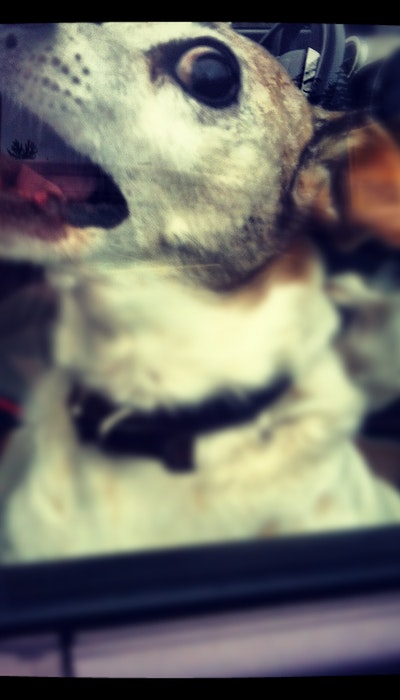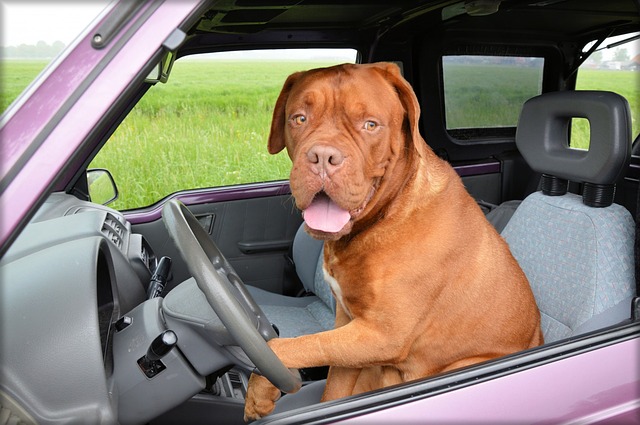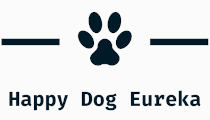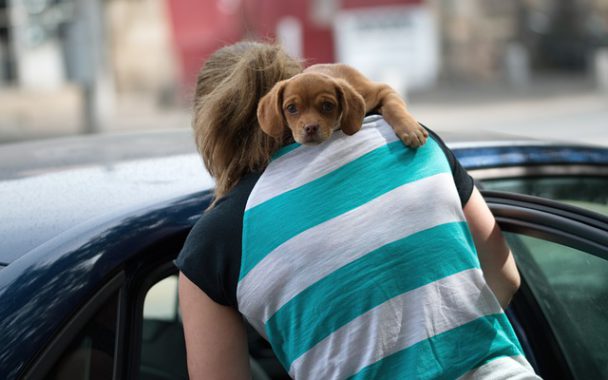Doesn’t your dog want to get into the car on his own? Does he drool or vomit as soon as “titin” purrs? Maybe he’s throwing himself on the windows or he’s barking? In short, you notice that your dog feels bad in the car or next to it. So how do you do that? A practical and eco-friendly solution take a bike!

1 Why is your dog afraid?
It is very important to understand why your dog is afraid. Indeed, it is by understanding the why you will be able to have the “how”! Here are some leads:
- Your dog is now an adult and he has never taken the car. The unknown is a source of stress for many dogs.
- Your puppy has not finished growing and his inner ear is playing tricks on him! Indeed, the mechanism that manages the inner ear, which allows to hear and adjust the balance of the body, is not yet completed. The puppy then feels bad.
- Your dog had a car injury. It may be a car accident, but also things that we consider more innocuous experienced as intense stress, such as a surprising noise, falling from the seat or bumping into the lord of transport.
- Every time your dog got in the car, you took him to the vet. Or for an abandoned dog it’s the last thing he did before landing at the SPA. So a situation he considers to be anxiety-inducing.
- Your dog has a problem in managing these emotions. Everything he sees through the car window gets him excited. Then he goes crazy!
2 Signs of fear or anxiety
Here is a list of behaviors that can show you the well-being of your dog in the car. This is general because each dog is different. So some signs may not be in this list or slightly different:
- Your dog drools profusely or vomits.
- He can’t stay, he gets up and moves all the time. He’s trying to get next to you or on you.
- He doesn’t want to get close to a car even when he’s stopped.
- He tolerates them at a standstill, but he doesn’t want to get into it.
- It gets in, but once the engine starts it drools, vomits, defecates or urinates inside.
- He barks, moans all the time
- He throws himself on the windows, no longer pays attention to you, even if he gets on top of you, starts barking like a madman. In short, he turns into a Hulk.
3 Positive the car
The first step is to make the car positive! This step is more or less long depending on the stress level that triggers in the dog compared to the car.
Positive the car by driving slowly! It may seem innocuous, but your driving has an impact on your dog’s stress. And yes, he can’t anticipate braking or turning. It cannot then act before to maintain or balance itself. So watch out for you as well as for him.
Offer him an occupancy toy in the car to help him land. If your dog manages to take care of himself, he will have his head elsewhere and stress much less!
Before any car journey, don’t forget to take your dog for a walk, also to check that he has made these needs. Finally, during long journeys do not hesitate to stop every one to two hours, so that your dog can relieve himself and walk.
4 Keep your dog safe
Remember that your dog can’t understand the real dangers of a ride. He doesn’t understand the stakes, so we have to keep him safe so he doesn’t get hurt. To keep your dog safe and be in good standing in the eyes of the law you have 3 solutions:
- Tie up your dog. There are dog seatbelt fasteners that attach to the harness and cling to the usual belt fastener. This prevents the dog from moving. He will still be able to sit or go to bed.
- Put your dog in the trunk with a net or a so-called safety gate. This allows the dog to sneak through the seats and move to the front.
- Put the dog in a transport cage. That is the most secure thing right now. Indeed, with this solution the dog does not become a projectile, cannot get excited about what is happening on the outside and will not hinder his master in the front. Many dogs manage to rest in these crates. However, you have to choose the right size so that the dog can move around.
If your dog is safe, move less, there is less chance of him panicking or hurting himself by moving in the car. It’s safer for everyone.
5 Help him differently
Some dogs need an extra boost, especially if they are struggling with transport. If hiding their eyesight by putting them in a transport crate can be a help, there are others. You can also:
- help him by giving him Bach flowers, homeopathy or by putting a necklace that diffuses soothing pheromones. This will allow your dog’s emotions to regain balance.
- ask your vet for advice if the car is unbearable and far too stressful.
- make sure it’s not too hot or too cold in the car, or that your music isn’t too scary.

6 Desensitization
Finally, if your dog is abnormally scared or stressed next to a car, then it will have to be desensitized before you even get him up there. Fear or stress can cause the dog to run away or run on the car. Desensitization must be brought gradually and consistently.
Before you start desensitizing, be aware that this is a delicate job that requires observation. You may be helpful, with the help of a professional canine behavioral educator. After each stage of desensitization, it will be necessary to allow your dog to let off steam to externalize his emotions. Taking him to sniff out smells during a quiet walk and on foot will do him the greatest good. Here are the steps that might vary depending on the context:
- Place your dog at a distance where he manages to ignore the car. If he’s already trying to run away or run on the car, you’re already too close! Then step away!
- Once you’re at the right distance, you can play with your dog, give him treats in his comfort zone and reward these quiet moments.
- Gradually you can reduce the distance between you and the car by continuing to play with your dog. Don’t go too fast, because by burning the steps you will miss your learning and will be even more difficult for your dog next time. Your dog has the right to look at the car. The important thing is that he stays calm and is widely rewarded for it.
- Once these steps have been completed and the distance reduced, your dog must be able to sniff out the car (which still has the engine off), observe it while taking its time. You can continue to play with him or give him treats to encourage him to stay next to the car. It is very important not to force your dog!
- This step has been taken, if your dog is no longer worried, then you can teach him how to get in the car. Be careful that his place is free, that there is no object that could hurt him on the climb or surprise him! You can teach him how to ride by lure him with a toy or treat. You can also encourage your dog to ride by being yourself in the car or by calling on a dog buddy who will ride easily and lead by example. It is important to take your time and not start the car or necessarily close the door. The dog must be rewarded for going up and down. Don’t make him stay indoors for long! Bring his pillow, his toys or even his croquettes. Do everything to make him consider the car as a second room in the house.
As with any learning, it requires step-by-step work and repetition. You will have to be patient, motivating and caring so that your dog trusts you fully for the car. Always finish your job with something nice for your dog. This can be:
- a candy jackpot
- a walk
- a moment of games
- a massage session
- or just leaving it alone
Here are a few ways to help your dog enjoy the car! It is not always easy for them. So you have to be able to put yourself in their shoes!

